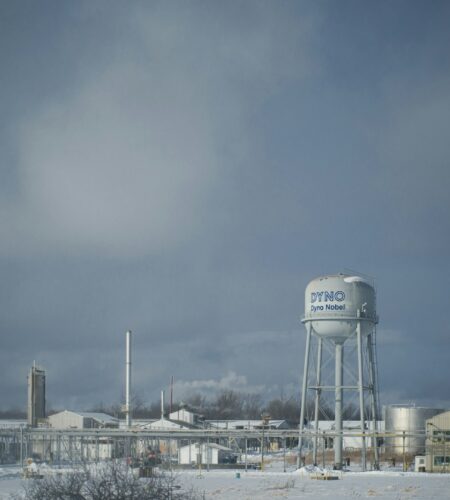When dealing with industrial systems, ensuring the proper installation of heated pipes is crucial for maintaining efficiency, preventing damage, and reducing downtime.
Heated pipes, often paired with electrical heat tracing systems, play a pivotal role in temperature regulation for critical processes, such as chemical manufacturing, water distribution, and even oil transportation.
Improper installation, however, can lead to performance issues and costly repairs. This guide provides detailed installation tips and essential best practices to help you achieve a successful heated pipe setup while prioritizing reliability and safety.
From choosing the right materials to understanding maintenance needs, we’ll cover everything you need to know.
Why Heated Pipe Installation Matters
Proper installation of heated pipes ensures the maintenance of specific temperature ranges critical for various industrial operations. These systems, powered by heat trace systems, prevent fluids from freezing in colder climates and maintain flowability in pipelines.
A poorly installed system can lead to inefficiencies, equipment breakdown, and even production delays, costing businesses time and money.
By following the correct process, companies can maximize energy efficiency, optimize performance, and prolong the lifespan of their pipes.
Essential Heated Pipe Installation Tips
1. Select the Right Heat Tracing System
Electrical heat tracing systems are key components of heated pipes, responsible for maintaining desired temperatures. Choosing the right system will depend on the needs of your operation. Common types include:
- Self-regulating systems: Adjust output based on the pipe’s surface temperature, ideal for energy efficiency.
- Constant wattage systems: Ideal for applications with stable temperature requirements.
- Skin-effect systems: Used for long pipelines and specific industrial applications.
Take into account factors like pipe material, diameter, and insulation requirements when selecting your heat trace system.
2. Inspect Pipelines Before Installation
Before beginning any heated pipe installation process, inspect your pipelines for damages such as cracks, corrosion, or structural weaknesses.
These issues must be addressed to prevent more significant failures down the line. Ensure pipelines are clean, as dirt, rust, or debris can affect the adhesion and performance of the heat trace system.
3. Ensure Proper Insulation
Insulation plays a pivotal role in heated pipe systems by retaining heat and preventing energy loss. Use high-quality insulation materials that match the operational temperature range and environmental conditions of the pipeline. Some common materials include:
- Fiberglass
- Mineral wool
- Cellular glass
Pro Tip: Seal all insulation seams securely with appropriate adhesive or sealants to prevent moisture intrusion, which can compromise thermal efficiency.
4. Follow Manufacturer Installation Guidelines for Heat Trace Systems
Each heat tracing system will come with specific installation guidelines designed to optimize performance. Make sure to:
- Follow prescribed spacing and layout patterns for heat trace cables.
- Secure cables with durable, non-abrasive fasteners to avoid damage to electrical components.
- Route cables with consistent overlap, avoiding sharp bends or kinks that might lead to malfunctions.
By adhering to recommended practices, you can reduce the likelihood of failure and ensure compliance with safety standards.
5. Test Throughout the Installation Process
Regular testing during heated pipe installation ensures that systems operate as intended. Key tests include:
- Continuity testing: Confirms electrical connections are intact.
- Insulation resistance testing: Ensures there are no electrical leaks.
- Functionality testing of control systems: Verifies accuracy of temperature regulators, alarms, and shutdown systems.
Document all test results to verify compliance with industry standards and manufacturer warranties.
6. Weatherproof Outdoor Installations
For systems installed outdoors or in harsh environments, special considerations are required to protect heated pipes against water, snow, or UV exposure.
Use weatherproof materials and ensure all connectors, terminations, and enclosures are sealed against external elements. Proper weatherproofing helps prevent corrosion, short circuits, or system degradation over time.
Ensuring Long-Term Pipe Maintenance
Installing heated pipes is only half the equation; regular pipe maintenance is critical for long-term reliability. Here’s what you can do to extend the life of your system:
1. Conduct Routine Inspections
Inspect heat trace cables and insulation for visible damages such as wear-and-tear, moisture intrusion, or exposed wiring. Look for signs of overheating or potential leaks that could indicate system inefficiencies.
2. Monitor System Performance
Install monitoring tools to track the performance of your electrical heat tracing system. Modern systems often include temperature sensors, alarms, and connected software that provides real-time analytics.
3. Schedule Periodic Testing
Testing your systems regularly, especially during seasonal transitions, ensures everything is functioning as expected. Seasonal temperature fluctuations can sometimes affect the performance of heat trace systems.
4. Keep Spare Components on Hand
Store spare heating cables, sensors, and other vital components for quick replacements, minimizing downtime in case of unexpected repairs.
Maximizing Efficiency with Expert Installations
Industrial heated pipe installation requires expertise, precision, and regular follow-ups to secure optimal performance.
When done properly, heated pipes and electrical heat tracing systems provide tangible benefits when it comes to efficiency, cost savings, and pipeline longevity.
For businesses venturing into new installations, working with experienced installers or consulting professional engineers can significantly enhance the success of your project.
Subscribe to our email newsletter to get the latest posts delivered right to your email.

